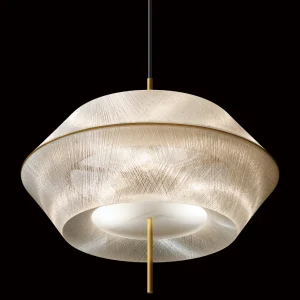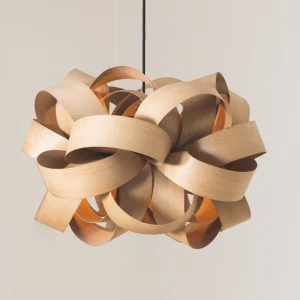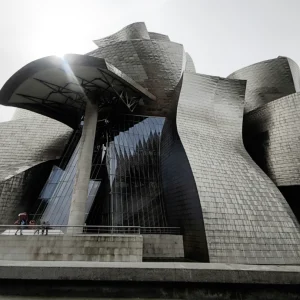Can you pinpoint the thought, whether yours or someone else’s that led you to a career in design?
I don’t think I could put this down to one thought in all honesty, more a series of thoughts and events over my formative years, starting with the enjoyment I got out of design and technology (D&T) at school. I got a lot of satisfaction from designing and making things in the workshops at school – usually not particularly well! When I was in the sixth form, I was invited to redesign the sixth-form centre, which although fairly compact needed to fulfil a lot of functions and stand up to students treating it the way that only students do! It was then that I realised I enjoyed creating spaces. When a family member told me that I could make a living out of interior design then that was it, and the rest, they say, is history.
In terms of the design and architecture industry, what do you consider the most radical era or pivotal moment?
Obviously, the modernism movement was when everything shifted and so that’s perhaps the most predictable answer! In truth I think the period between 2005-2015 was fairly significant – design was suddenly everywhere and accessible to all. This was both good and bad, with the internet giving a lot more [visibility] and access to, design. It was a time when everyone also had a Pinterest board. This provides a new challenge for designers as we’re now creating for a more ‘educated’ market, so we need to dig deeper and design more intelligently.
Which radical thinkers have been inspirations to you in your career?
My tutor at Kingston University, Ian Higgins, was a great inspiration to me and certainly a radical thinker. During my time studying under him, he was, and still is, extremely passionate about design and rigorous in the process. He wanted to ensure that we all ‘thought outside of the box’, pushing the conceptual approach before getting too bogged down in detail. However, he also instilled discipline in the process – something that has stayed with me throughout my career.
Who are the radical thinkers who inspire you now? (Not necessarily forever or for a lifetime – just now!)
I find kids’ imaginations incredibly inspiring; with many years of experience it can be very easy to write off ideas on the basis of what you perceive to be achievable. With materials and technologies developing more quickly than ever before, what was not possible five years ago could be entirely possible now. This highlights the value of having some younger people in your team as well as constantly challenging your own thinking and preconceptions.
Who outside the industry can architects and designers learn from?
As above, I think we can learn a lot from the naive and creative minds of kids. Beyond that, I believe we can learn best from non-designers. Ultimately, they make up the majority of the end users for our designs, something that’s so easy to forget when surrounded by other creatives! Focusing on the end user provides clarity when designing and helps to define our briefs. So learning what will appeal to, and work for, them is crucial. Often for us this is the hospitality operator and their team.
 Plumb thinks the period between 2005-2015 was a significant era, when everyone had a Pinterest board and design was accessible to all. Image Credit: MEHANIQ/SHUTTERSTOCK.COM
Plumb thinks the period between 2005-2015 was a significant era, when everyone had a Pinterest board and design was accessible to all. Image Credit: MEHANIQ/SHUTTERSTOCK.COM
Could you name two buildings/pieces of furniture that you consider radical designs of their time, or perhaps still to this day?
I love the Phillips Exeter Academy Library, Exeter, New Hampshire, by Lewis Kahn. Khan was a master of form and in my opinion played a radical role in the modernist movement. I also consider The Find house by Found Associates a radical building. It consists of a small, traditional cottage in Cotswold stone with a huge radical extension, if you could call it that; radical because on the face of it it goes against all the heritage principles of making modern additions subservient to the host building in terms of scale, but in my opinion it works and is a masterclass in how to do it. I’m sure not all would agree but I think it is very good!
What will lead the way for more radical thinking in your/our field?
The idea of materials and furniture having a second life through repurposing has been gaining traction for a number of years and is talked about a lot in the design media. In my opinion, this becoming the norm for commercial projects is still some way off due to budgets and limited availability of quality products/materials. I believe this will drive more radical thinking and intelligent design over the coming decade.
Could you recommend a book/article/blog that inspired your thinking?
I’m a big fan of the Australian blog YellowTrace, as there’s always something inspiring to look at and read on there. I am also a big fan of magazines and subscribe to Living Etc amongst others, which I draw a lot of design inspiration from early in the morning.
If you weren’t a designer/architect, where do you think your way of thinking would have led you?
I would have been a maker of some kind, potentially a woodworker as I always enjoyed this and still do get pleasure from making things with wood.
I think best with… (e.g. my hands/a pencil/ with a computer)
My hands, sketching and making.
I think best… (e.g. first thing in the morning/ last thing at night)
In the morning, after the kids are out of the house and I have a cup of coffee.
I think best when… (e.g. in a gallery/at home/outside/over drinks/with friends/on the bus)
I am not trying to think too hard, usually walking or travelling between places.
Do you like to think with, or think against?
Definitely with.
 The Phillips Exeter Academy Library by Lewis Kahn. Image Credit: 2_D/SHUTTERSTOCK.COM
The Phillips Exeter Academy Library by Lewis Kahn. Image Credit: 2_D/SHUTTERSTOCK.COM
Could you describe radical thinking in three words?
Persevere, push, develop.
The thought that gets me out of bed each day is…
Coffee… and next ‘what’s today got for me?’
The thought that keeps me up at night is…
Detail and problem-solving. I have a habit of overthinking details and also pre-empting issues. This is good for our clients but not so ideal for me!
What’s the most radical thing you’ve come across today or this week?
ODOS Architects’ design for the Church of Oak Distillery. They have crowned a traditional industrial grain store in a really interesting, new roof structure, which is pyramidal in form and constructed from Corten steel – radical because it is not what you’d expect to see. The form reminds me of architecture in my local area which follows Steiner’s principles.
Ed Plumb, Studio Found

Studio Found, a hospitality design studio founded by Ed Plumb, works with some of the UK’s most respected restaurateurs, chef/ owners and bar groups. Working collaboratively with clients it creates award-winning hospitality interiors that elevate customer experiences through narrative-driven designs and a meticulous attention to detail





